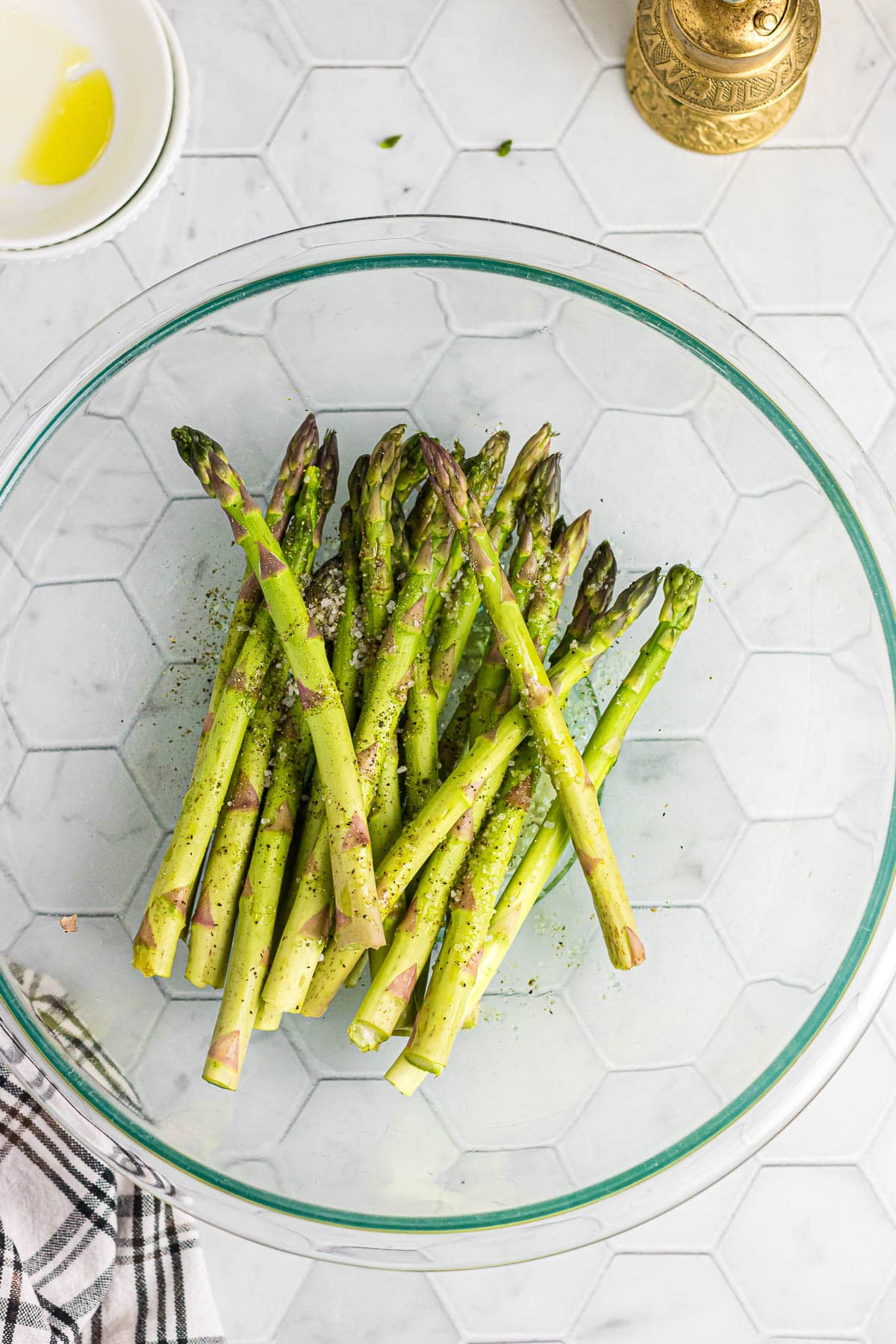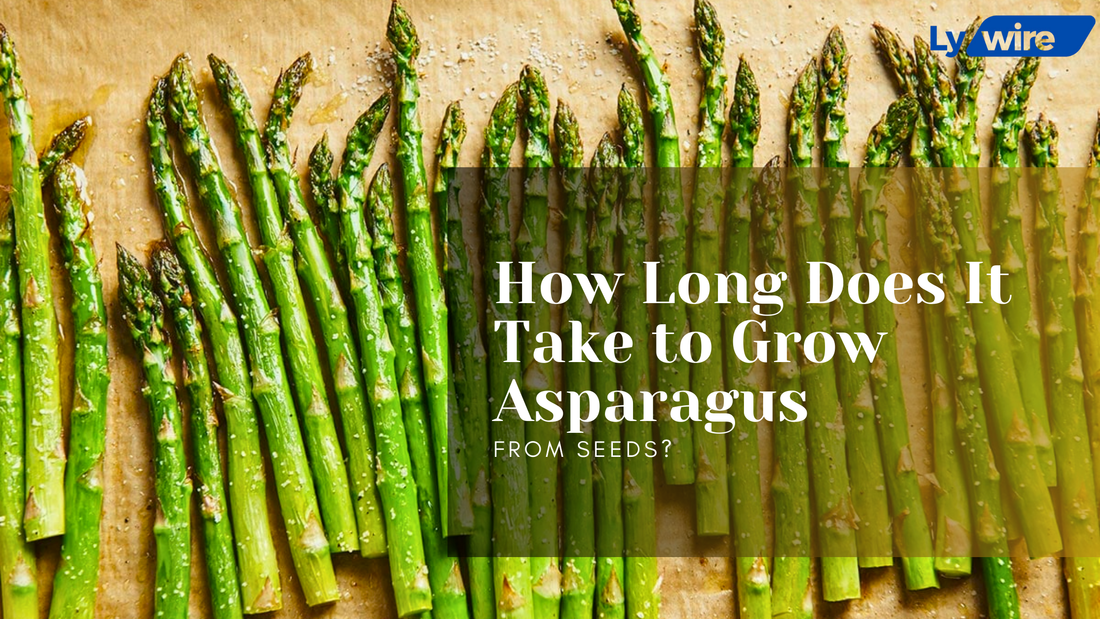
Growing asparagus (Asparagus officinalis) from seeds is a rewarding yet patience-testing endeavor. Known for its rich flavor and nutritional benefits, asparagus is one of the few perennial vegetables that can produce harvests for decades when properly cultivated. However, the journey from seed to harvest requires careful planning, nurturing, and—most importantly—time. In this blog, we’ll explore the timeline, steps, and tips for growing asparagus from seeds.
Understanding the Timeline: From Seed to Harvest
Growing asparagus from seeds is a multi-year process. Here’s a breakdown of what to expect:
Year 1: Germination and Establishment
- Asparagus seeds take 2–8 weeks to germinate under optimal conditions (soil temperature of 70–85°F or 21–30°C).
- During the first year, the plant focuses on developing its root system and crown. No harvest occurs during this phase as the plant needs to establish itself.
Year 2: Continued Growth
- By the second year, some gardeners may harvest a few spears if they are thick enough (pencil-sized or larger). However, it’s generally recommended to let the plant grow undisturbed to strengthen its root system.
Year 3: First Harvest
- The third year marks the first significant harvest. You can collect spears for about 2–3 weeks before allowing the remaining shoots to grow into fronds that nourish the plant.
Year 4 and Beyond: Full Harvest
- From the fourth year onward, you can enjoy a full harvest season lasting 6–8 weeks each spring. With proper care, an asparagus bed can remain productive for over 20 years.

Step-by-Step Guide to Growing Asparagus from Seeds
Choosing and Preparing Seeds
- Select high-quality asparagus seeds from a reputable supplier.
- Soak seeds in water for about 2 hours before planting to improve germination rates.
Starting Seeds Indoors
- Sow seeds indoors in late winter or early spring in seed trays filled with nutrient-rich soil.
- Plant seeds about half an inch (1 cm) deep and keep them in a warm spot with temperatures between 70–85°F (21–30°C).
- Germination can take anywhere from 2–8 weeks depending on soil temperature.
Transplanting Seedlings
- Once seedlings are about 10–12 weeks old and all danger of frost has passed, transplant them outdoors.
- Space plants 18 inches apart in rows that are 3–6 feet apart for optimal growth1.
Soil Preparation
- Asparagus thrives in well-drained, nutrient-rich soil with a pH of 6.5–7.5.
- Amend the soil with organic matter like compost or aged manure before planting.
- Dig trenches about 10 inches deep and gradually cover the crowns with soil as they grow.
Watering and Fertilizing
- Provide about 1 inch of water per week during the growing season.
- Fertilize in early spring and after harvest with an organic fertilizer to promote healthy growth.
Weed Management
- Keep your asparagus bed weed-free as weeds compete for nutrients and water.
- Mulching around plants can help suppress weeds and retain soil moisture.

Common Challenges When Growing Asparagus
Diseases
- Rust and Fusarium wilt are common fungal diseases that can affect asparagus plants.
- To prevent disease, start with sterile soil and avoid planting in areas with a history of asparagus-related diseases.
Pests
- Asparagus beetles can defoliate ferns. Remove fronds in late fall to eliminate overwintering beetles.
- Encourage beneficial insects like ladybugs to control aphid populations naturally.
Companion Planting Tips
Certain plants can enhance asparagus growth or repel pests:
- Good companions: Tomatoes (repel asparagus beetles), basil, parsley, marigolds, and dill.
- Avoid planting alliums (like onions or garlic) near asparagus as they may compete for nutrients.
Harvesting Asparagus
Patience is key when harvesting asparagus:
- Wait until the third year after planting before harvesting spears.
- Harvest spears when they are about 6–10 inches long by cutting them at ground level.
- Allow thinner spears to grow into fronds to nourish the plant.

Why Grow Asparagus from Seeds?
While growing asparagus from crowns is faster (skipping the first two years), starting from seeds offers several advantages:
- Cost-effective: Seeds are cheaper than crowns.
- Disease resistance: Plants grown from seed are less likely to carry diseases compared to purchased crowns.
- Variety: Seeds provide access to a wider range of asparagus varieties.
Growing asparagus from seeds is an investment in time but yields long-term rewards. With proper care, your patience will be rewarded with fresh, flavorful spears every spring for decades to come. Whether you’re an experienced gardener or a beginner looking for a challenge, cultivating asparagus is a fulfilling journey worth embarking on.
So why wait? Start your asparagus garden today and enjoy the fruits—or rather, spears—of your labor!

